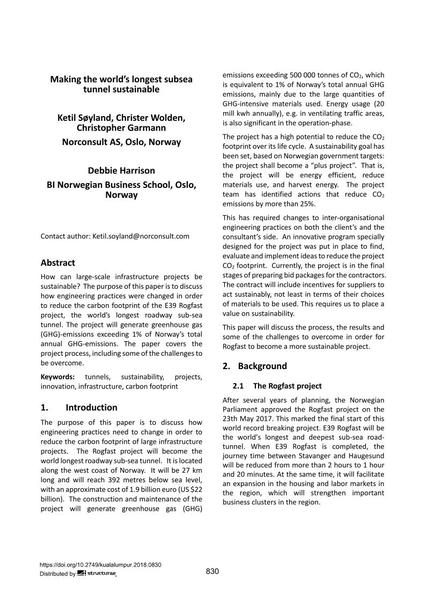Making the world’s longest subsea tunnel sustainable

|
|
|||||||||||
Bibliographic Details
| Author(s): |
Ketil Søyland
(Norconsult AS, Oslo, Norway)
Christer Wolden (Norconsult AS, Oslo, Norway) Christopher Garmann (Norconsult AS, Oslo, Norway) Debbie Harrison (BI Norwegian Business School, Oslo, Norway) |
||||
|---|---|---|---|---|---|
| Medium: | conference paper | ||||
| Language(s): | English | ||||
| Conference: | IABSE Conference: Engineering the Developing World, Kuala Lumpur, Malaysia, 25-27 April 2018 | ||||
| Published in: | IABSE Conference Kuala Lumpur 2018 | ||||
|
|||||
| Page(s): | 830-837 | ||||
| Total no. of pages: | 8 | ||||
| DOI: | 10.2749/kualalumpur.2018.0830 | ||||
| Abstract: |
How can large-scale infrastructure projects be sustainable? The purpose of this paper is to discuss how engineering practices were changed in order to reduce the carbon footprint of the E39 Rogfast project, the world’s longest roadway sub-sea tunnel. The project will generate greenhouse gas (GHG)-emissions exceeding 1% of Norway’s total annual GHG-emissions. The paper covers the project process, including some of the challenges to be overcome. |
||||
| Keywords: |
sustainability infrastructure carbon footprint projects innovation tunnel
|
||||
